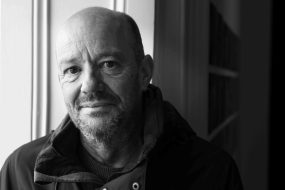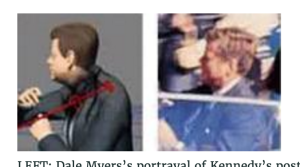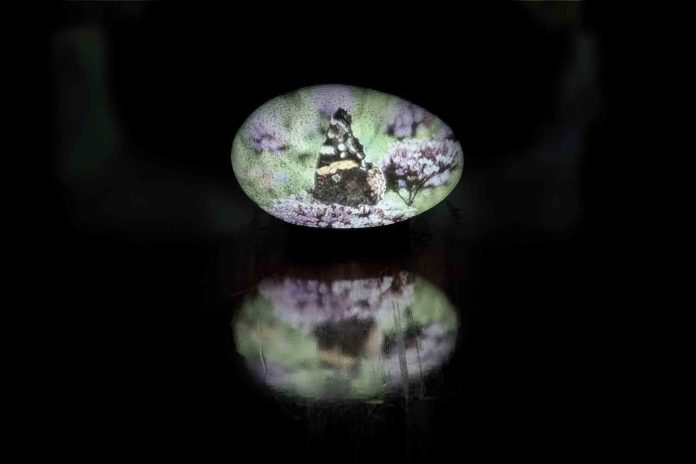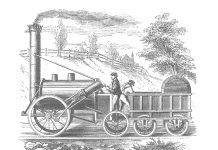On the Irwell bed, somewhere between Bacup and Bridge Street, the wreck of a sculpture trail sleeps. Since its feted art collection was washed away in a 2015 flood the river’s credentials as a Northern landmark have been challenged, with some shorter, less celebrated rivers now condescending to it in matters of the rivery pecking order.
Were there integrity in art, you could argue, someone would make an honest spectacle of the Irwell: a vast loaf of burping excrement marshalled into a city centre flow-past during MiF week could set the tone for a Deller-esque conversation with Manchester’s historical narrative. But perhaps that’s city-thinking. Machete your way through instead to the wilds of Rossendale, land of temperate bar and ski slope, and feel the reach of the regeneration credo. For it’s there, at the other end of the drink, that artist Liam Spencer is raising a glass to the all-new river.

Time was when the Whittaker Museum’s trove of stuffed mongeese and chainmail suits betrayed little more than the legacy of a Victorian cotton baron with a thing for buying up the crap from travelling shows. For a hundred years this served as a museum to the people of Rawtenstall; no longer, as the reborn ‘Whittaker’, upgraded, extended and culturally strategized to within an inch of its life, is one of the rising darlings of the northern art scene.
“What’s been amazing is to see people sit and watch the film work all the way through” the artist told me this week, as his Irwell: Afterlife show continues. Long known for his Manchester townscapes, a move back to his roots in the countryside has opened up new vistas in photography, filmmaking and multimedia gubbins. I stopped to gawp at the flicker of his wildlife cam projected on a swan’s egg from the museum’s collection. “I was thinking if people’s only interaction with a dipper is the one that’s stuffed, downstairs – maybe I can bring in some footage of a real dipper from down the road and project it.” Layered media abound in this response to the existing collection, on til Feb 19.
You can’t even see the road
In the shadows of a Belle Vue cinema the closing credits of the movie JFK are rolling. I’m nineteen years old. It’s a dog day afternoon and I’m sandwiched between indie pop singer Mike West and his get-ahead young manager, Jon Ronson. It’s Ronson who produces the witticism to contextualise what we’ve just watched. “Only Oliver Stone could make the conspiracy theory look far-fetched,” he quips, and it seems quite a clever thing to say.
All this comes wibbling back this week as Joe Biden approves the release of more declassified CIA files in line with the Assassination Records Collection Act – passed in response to the hit film. Checking in on the Dealey Plaza Puzzler every ten years or so it’ s striking to see how the mystery can interleave with life’s own luckless motorcade: growing up riveted at the world’s greatest murder mystery (US president gets his brains blown out on camera with more suspects than a Cluedo convention) it seemed almost a rite of passage to have to finally accept the sanity of the lone gunman theory. “What you have to understand about  Lee Harvey Oswald,” argued one man-of-the-moment as the lone gunman theory hit back in the 1990s, “is that he wouldn’t have crossed town to take a shot at the president. But if the president was going to ride by his window he was the kind of person who wouldn’t be able to resist blowing his head off.” Psychomumbular certainty like that passed for insight in the 1990s.
Lee Harvey Oswald,” argued one man-of-the-moment as the lone gunman theory hit back in the 1990s, “is that he wouldn’t have crossed town to take a shot at the president. But if the president was going to ride by his window he was the kind of person who wouldn’t be able to resist blowing his head off.” Psychomumbular certainty like that passed for insight in the 1990s.
Strange, then, with the ongoing doc dumps to see that conspiracy has left the lone gunman for dead now. Stone was right, as the files increasingly disclose. We now know that Oswald defected to Russia as a CIA plant on behalf of counterintelligence chief James Angleton; we know that when he was filmed tangling with Cubans shortly before the shooting he was doing so for the CIA; we even know the name of his handler, a man named George Joannides. The headline in the post appears to be: the CIA really did it, with Oswald the patsy. It wasn’t even a rogue knitting group. There really was a coup d’etat in America like Kevin Costner says in the film.
Why the big reveal now though? Because of the dates set out in the Act? Look closer, citizen, gaze into the abyss. Begin to perceive the unfolding conspiracy to solve the Kennedy Assassination. Follow the money. Look for the sign. Don’t even trust your own mother. As Ronson somehow called it back in the day: “Walls have ears, Danny!”
View from the blimp
To the drowsy helicopter the Etihad’s arachnid stomach is still digesting the night’s FA Cup fourth round result. Humans are pouring out into the night, away from the green, into the grey. In compound eyes Nathan Aké’s winning goal was like a shooting star climbing a hundred video screens. Now, there are fifty thousand pedestrians to be surveilled across a range of metrics insightful to human behaviours, none of them life-affirming. 
City’s 1-0 win over title rivals Arsenal is a bold step forward for Pep Guardiola’s men in a competition which has brought slim pickings for the Blues across the years. “That beautiful trophy” is how the manager chose to signal his regard for the domestic cup, this week, at a club where domestic focus is sometimes called into question. If Aké’s weighted pass into the net on his weaker right foot evoked the quiet thrum of a space probe slipping effortlessly into the orbit of one of Saturn’s minor moons, the analogy shouldn’t throw us. From such moments have Guardiola memories been spun: space age football as graceful and deathly as flies hovering in the reeds.

@dannyxmoran







